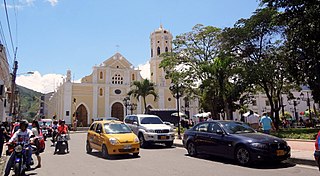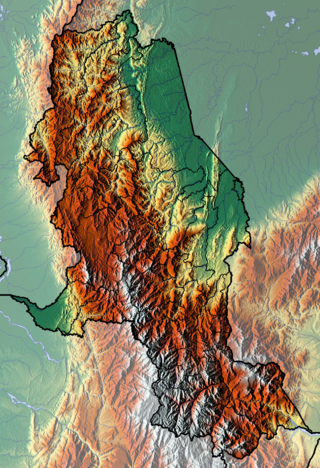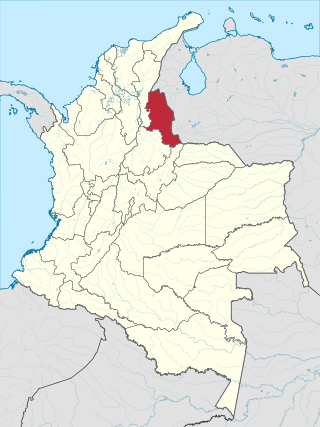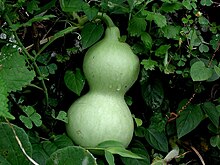
Santander is a department of Colombia. Santander inherited the name of one of the nine original states of the United States of Colombia. It is located in the central northern part of the country, borders the Magdalena River to the east, Boyacá to the south and southeast, the Norte de Santander Department to the northeast, the Cesar Department to the north, the Bolivar and Antioquia Departments to the west. Its capital is the city of Bucaramanga.

Cesar Department or simply Cesar is a department of Colombia located in the north of the country in the Caribbean region, bordering to the north with the Department of La Guajira, to the west with the Department of Magdalena and Department of Bolivar, to the south with Department of Santander, to the east with the Department of North Santander, and further to the east with the country of Venezuela. The department capital city is Valledupar.

Cúcuta, officially San José de Cúcuta, is a Colombian municipality, capital of the department of Norte de Santander and nucleus of the Metropolitan Area of Cúcuta. The city is located in the homonymous valley, at the foot of the Eastern Ranges of the Colombian Andes, on the border with Venezuela. It comprises an area of approximately 1119 km2, with an urban area of 64 km2 and a rural area of 1055 km2. The city has a population of 777,106 inhabitants, which makes it the most populous municipality in the department and the sixth most populous municipality in the country. Similarly, its metropolitan area has an approximate population of 1,046,347.

Francisco José de Paula Santander y Omaña was a Colombian military and political leader who served as Vice-President of Gran Colombia between 1819 and 1826, and was later elected by Congress as the President of the Republic of New Granada between 1832 and 1837. Santander played a pivotal role in the Colombian War of Independence being one of the main leaders of the Patriot forces and helped lead the Patriot Army alongside Simon Bolivar to victory. He's often credited with creating the legal foundations for democracy in Colombia, as well as creating the country's first system of public education. For these reasons he is considered a National Hero in Colombia and has thus commonly been known as "The Man of the Laws" as well as the "Organizer of Victory".

Ocaña is a city and municipality in the Colombian Department of Norte de Santander. Ocaña is the second largest populated center of this department. It played an important role during the Independence of Colombia from the Spanish monarchy.

Muzo is a town and municipality in the Western Boyacá Province, part of the department of Boyacá, Colombia. It is widely known as the world capital of emeralds for the mines containing the world's highest quality gems of this type. Muzo is situated at a distance of 178 kilometres (111 mi) from the departmental capital Tunja and 118 kilometres (73 mi) from the capital of the Western Boyacá Province, Chiquinquirá. The urban centre is at an altitude of 815 metres (2,674 ft) above sea level. Muzo borders Otanche and San Pablo de Borbur in the north, Maripí and Coper in the east, Quípama in the west and the department of Cundinamarca in the south.

The Guane were a South American people that lived mainly in the area of Santander and north of Boyacá, both departments of present-day central-Colombia. They were farmers cultivating cotton, pineapple and other crops, and skilled artisans working in cotton textiles. The Guane lived north of the Chicamocha River, around the Chicamocha Canyon in an area stretching from Vélez in the south to the capital of Santander; Bucaramanga in the north. Other sources state their territory did not extend so far north. Guane, a corregimiento of Barichara, Santander, is said to have been the capital of the Guane people.

Ambrosius Ehinger, also Dalfinger, Thalfinger, was a German conquistador and the first governor of the Welser concession, also known as “Little Venice” (Klein-Venedig), in northern South America, now Venezuela.

The Lache were an indigenous, agrarian people in the highlands of what is now central Colombia's northern Boyacá and Santander departments, primarily in Gutiérrez Province and García Rovira Province. They were part of the Cocuy Confederation and spoke Chibcha, trading predominantly with other Chibcha speakers, such as the Muisca, Guane, Pijao and Chitarero. Trade included salt and textiles, as well as food stuffs. The Lache farmed maize, potatoes, quinoa and cotton, among other crops.

The department of Norte de Santander in northwestern Colombia, and its capital, Cúcuta, contains several rivers. The rivers are mostly part of the Maracaibo Lake basin, with the southeastern section located in the Magdalena River basin. Important fluvial elements are the Zulia, Catatumbo and Pamplonita Rivers. The entity in charge of taking care of these hydrology of Norte de Santander is Corponor.

Pamplona is a municipality and city in Norte de Santander, Colombia. It is the fifth most populated city and the sixth most populated municipality in the department.

Chinácota is a small town and municipality located in the Department of Norte de Santander in Colombia, South America. This department is located in the north-eastern region of the country, near the border with Venezuela. Chinácota has a population of approximately 15,000 people according to the 2005 Colombian census.

North Santander is a department of Northeastern Colombia. It is in the north of the country, bordering Venezuela. Its capital is Cúcuta, one of the country's major cities.

Fray Pedro Simón was a Spanish franciscan friar, professor and chronicler of the indigenous peoples of modern day Colombia and Venezuela, at the time forming the New Kingdom of Granada. Pedro Simón is one of the most important Muisca scholars forming the basis for later scholars such as Lucas Fernández de Piedrahita, Alexander von Humboldt, Javier Ocampo López and many others.

The Guayupe are an Arawak-speaking indigenous group of people in modern-day Colombia. They inhabit the westernmost parts of the department of Meta. At the time of the Spanish conquest, more than 250,000 Guayupe were living in large parts of Meta.

The Muzo people are a Cariban-speaking indigenous group who inhabited the western slopes of the eastern Colombian Andes. They were a highly war-like tribe who frequently clashed with their neighbouring indigenous groups, especially the Muisca.

Ortún Velázquez de Velasco was a Spanish conquistador. He is known as the co-founder and first governor of Pamplona in the Norte de Santander department of Colombia, which borders Venezuela.
Hernán Venegas Carrillo Manosalvas was a Spanish conquistador for who participated in the Spanish conquest of the Muisca and Panche people in the New Kingdom of Granada, present-day Colombia. Venegas Carrillo was mayor of Santa Fe de Bogotá for two terms; in 1542 and from 1543 to 1544.

The Llanos Basin or Eastern Llanos Basin is a major sedimentary basin of 96,000 square kilometres (37,000 sq mi) in northeastern Colombia. The onshore foreland on Mesozoic rift basin covers the departments of Arauca, Casanare and Meta and parts of eastern Boyacá and Cundinamarca, western Guainía, northern Guaviare and southeasternmost Norte de Santander. The northern boundary is formed by the border with Venezuela, where the basin grades into the Barinas-Apure Basin.
The Pamplona Colonial House Museum is a museum located in northeastern Colombia. It is one of the oldest museums in the department of Norte de Santander.


















